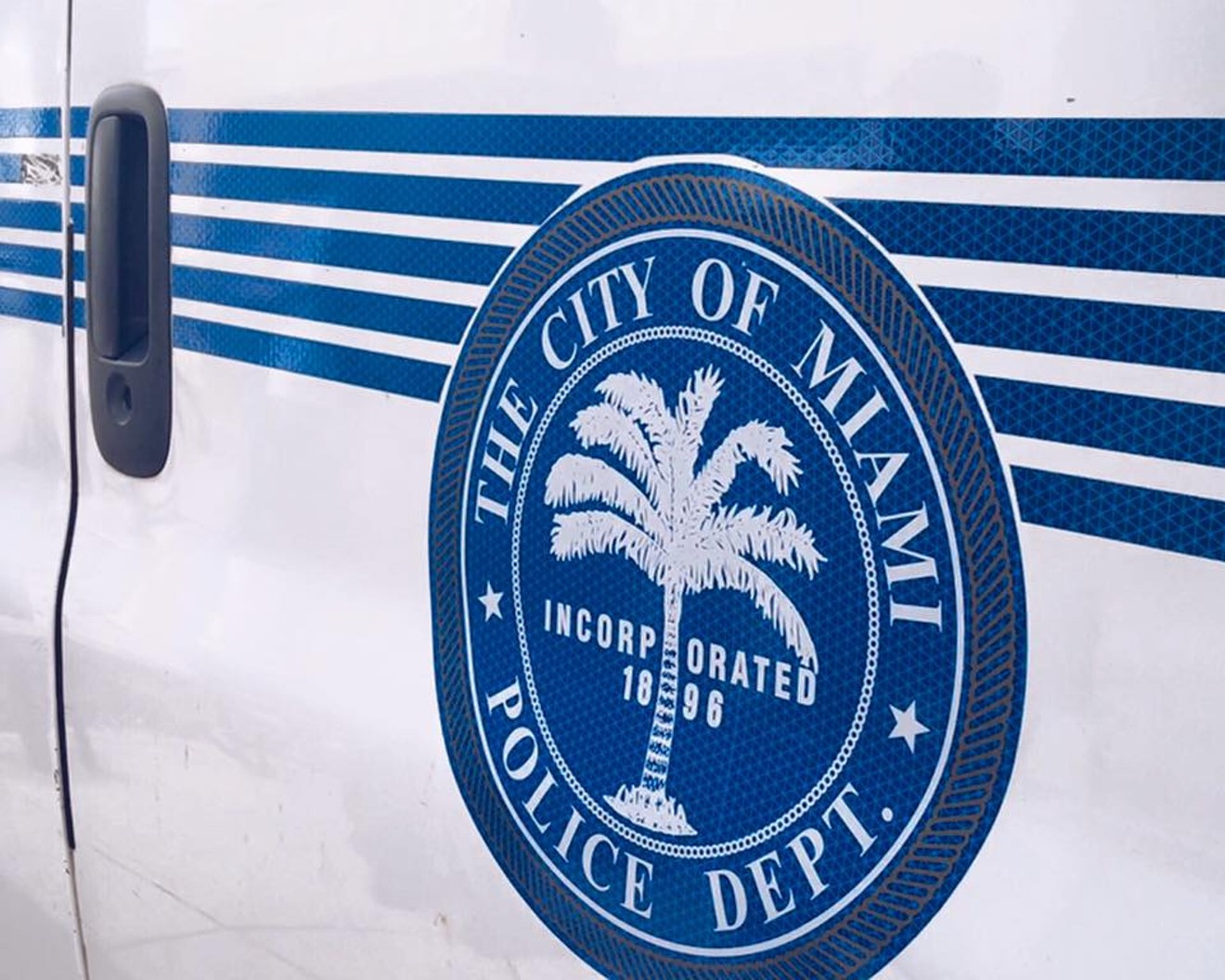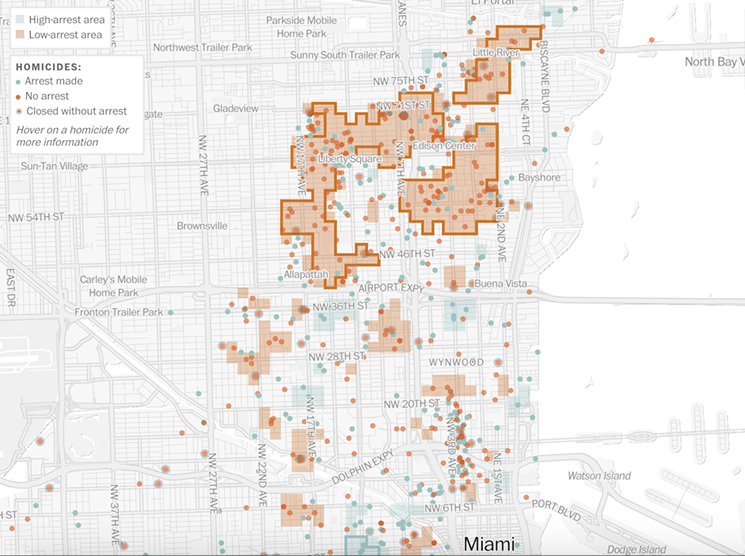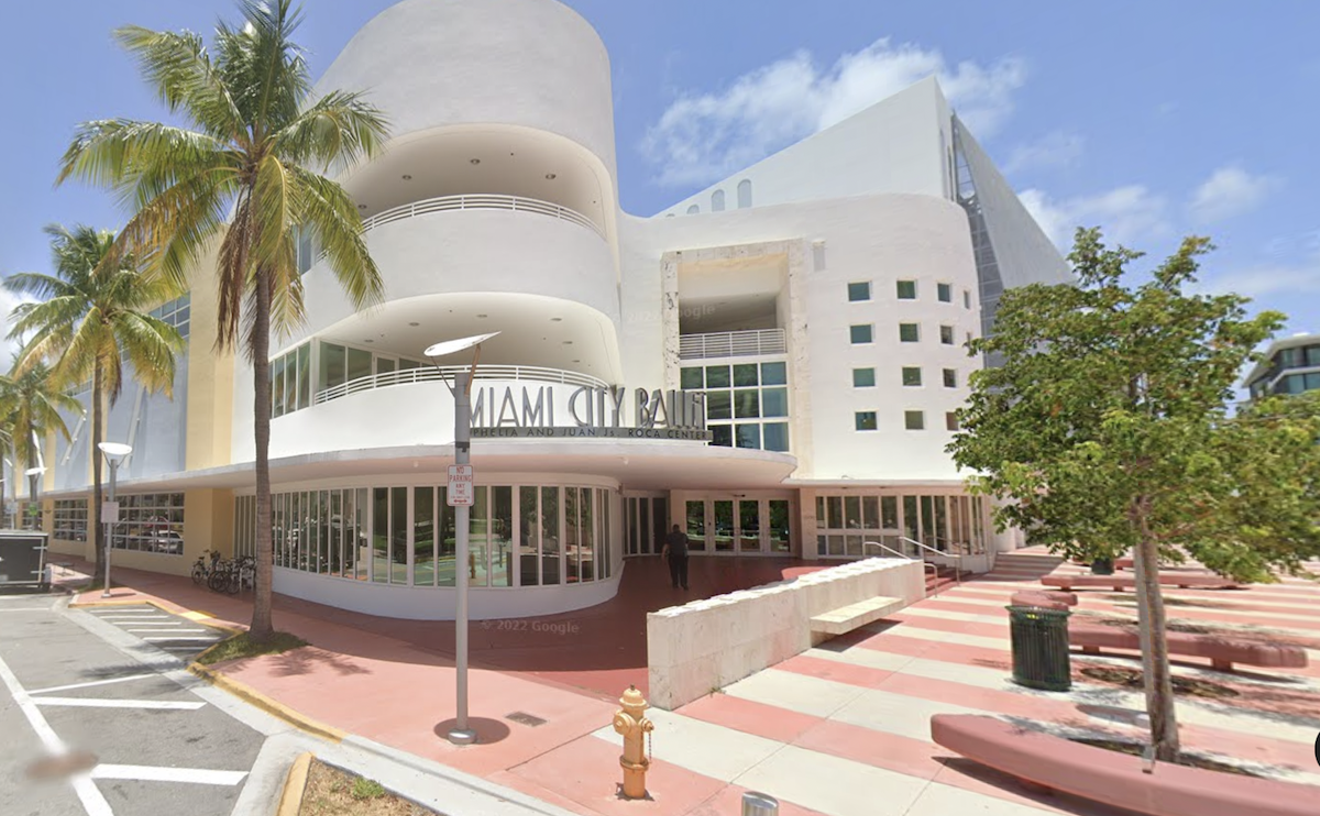In January 2016, 15-year-old Alder Hill was bicycling home through Liberty City when someone jumped him, dragged him into a grassy field, and sprayed his body full of bullets. Dozens of people soon gathered at the murder scene, some snapping photos of the dead teen and uploading them to social media.
But two years later, police still haven't made an arrest in his homicide. And in the part of Miami where Alder lived and died, that's hardly unusual. A new data analysis out today from the Washington Post shows that in Miami's low-income, mostly black neighborhoods, fewer than one in every three murders were solved in the past decade.
That's not a unique problem — the Post's report, called "Where Killings Go Unsolved," shows there are large swaths of cities nationwide where murderers are all but impervious to arrest. But the problem varies widely from city to city, with cops in metropolises such as Atlanta solving most murders citywide and police in Chicago and Baltimore essentially abandoning huge areas.
Overall, the Miami Police Department ranks near the bottom of the 50 major metro cities surveyed by the Post, with 40 percent of murders resulting in arrests; only Buffalo, San Bernadino, Baltimore, New Orleans, and Chicago have worse overall rates. The national average is 49 percent.
The Post also finds a racial disparity in terms of which cases were solved. In Miami, murders with a minority victim were closed with an arrest roughly 30 percent of the time, while closer to half of all cases where a white person died ended with arrests.
In Miami, as in most cities surveyed by the Post, police don't solve murders at the same rate across the city. The Post's investigation found large pockets of Miami where homicide arrests were far rarer. On the following map, the areas highlighted in orange had high rates of homicide where fewer than one in three were ever solved:
The areas where murders most regularly go unsolved are Liberty City, Little Haiti, and Little River — all traditionally black, largely lower-income neighborhoods. Smaller pockets near Wynwood, Overtown, and Allapattah also had high murder rates with low arrest numbers.
Why aren't police solving murders such as Hill's? The answers, of course, are complex.
The Post doesn't directly confront MPD, but in general, police told the paper that "insufficient resources and poor relationships with residents" are to blame, as well as a "no snitch" culture in areas where witnesses often either distrust police, fear reprisal from gangs, or both.
Community advocates, meanwhile, say a rampant culture of police violence against minorities has created an untenable situation with victims trapped between abusive law enforcement and violent criminals.
Whatever the cause, in the hours after Alder Hill's death, police were already pleading for help they weren't likely to get. The teen, who was biking home from a cousin's house, was probably just in the wrong place at the wrong time. And although dozens of people witnessed some part of the killing, "no one has come forward out of fear of retaliation," the Miami Herald reported the next day.
"This was an execution that occurred here of an innocent child," MPD Sgt. Julio Pino said at the time. "We're in desperate need of the community coming together and stepping forward."
For now, Hill's case remains unsolved — as do 60 percent of the other 744 murders across Miami in the past decade.
[
{
"name": "Air - MediumRectangle - Inline Content - Mobile Display Size",
"component": "19274298",
"insertPoint": "2",
"requiredCountToDisplay": "2"
},{
"name": "Editor Picks",
"component": "17482312",
"insertPoint": "4",
"requiredCountToDisplay": "1"
},{
"name": "Inline Links",
"component": "18711090",
"insertPoint": "8th",
"startingPoint": 8,
"requiredCountToDisplay": "7",
"maxInsertions": 25
},{
"name": "Air - MediumRectangle - Combo - Inline Content",
"component": "17482310",
"insertPoint": "8th",
"startingPoint": 8,
"requiredCountToDisplay": "7",
"maxInsertions": 25
},{
"name": "Inline Links",
"component": "18711090",
"insertPoint": "8th",
"startingPoint": 12,
"requiredCountToDisplay": "11",
"maxInsertions": 25
},{
"name": "Air - Leaderboard Tower - Combo - Inline Content",
"component": "17482313",
"insertPoint": "8th",
"startingPoint": 12,
"requiredCountToDisplay": "11",
"maxInsertions": 25
}
]













